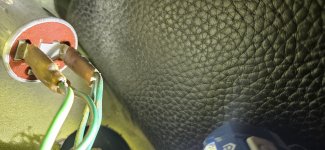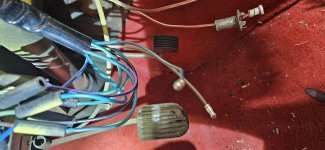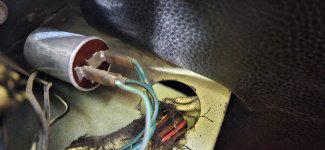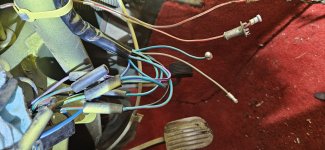Hello everyone-
This is my first time and I am by no means a mechanic and trying to learn. One problem I have is that I cannot get my 1966 Roadster Blinkers to Work. I tried to search everywhere and I found that the Flasher Relay is under the Glovebox area. I was told to test the "Green" wires for power. IF there isnt any Power, that the "Hazard" switch is the issue. Here is the problem. I cannot find anywhere about where the Hazard switch is on this 1966 Roadster. Its not obvious to me. Keep in mind this car had all its electronic switches pulled by previous owner to repaint the whole car. Sadly they put some of it back not sure if everything was put back right. Anyways, I did replace the Blinker Control on the Steering column and reconnected them Color by color that I found on the Old one. The only thing missing is that this new one had a Brown Wire but there isnt a Brown to connect to under there. So I can provide pictures of my setup but I really could use some direction as to if there is a Hazard switch on this car and where it would be. Where the Flasher Relay is, there was a connector with 2 dark green wires, Another with a light Green, and antoher with Green with Red Stripe.
I really hope someone could guide me because that is the last electrical thing I need working. The Headlights work, Break lights, Running lights. I am just lost on the Turn signals.
This is my first time and I am by no means a mechanic and trying to learn. One problem I have is that I cannot get my 1966 Roadster Blinkers to Work. I tried to search everywhere and I found that the Flasher Relay is under the Glovebox area. I was told to test the "Green" wires for power. IF there isnt any Power, that the "Hazard" switch is the issue. Here is the problem. I cannot find anywhere about where the Hazard switch is on this 1966 Roadster. Its not obvious to me. Keep in mind this car had all its electronic switches pulled by previous owner to repaint the whole car. Sadly they put some of it back not sure if everything was put back right. Anyways, I did replace the Blinker Control on the Steering column and reconnected them Color by color that I found on the Old one. The only thing missing is that this new one had a Brown Wire but there isnt a Brown to connect to under there. So I can provide pictures of my setup but I really could use some direction as to if there is a Hazard switch on this car and where it would be. Where the Flasher Relay is, there was a connector with 2 dark green wires, Another with a light Green, and antoher with Green with Red Stripe.
I really hope someone could guide me because that is the last electrical thing I need working. The Headlights work, Break lights, Running lights. I am just lost on the Turn signals.

 Hi Guest!
Hi Guest!

 smilie in place of the real @
smilie in place of the real @
 Pretty Please - add it to our Events forum(s) and add to the calendar! >>
Pretty Please - add it to our Events forum(s) and add to the calendar! >> 




